November 18, 2021
From the Vault: A Mini Model Room Mystery
A puzzling model and two recently rediscovered documents from the archive take us on an unexpected journey
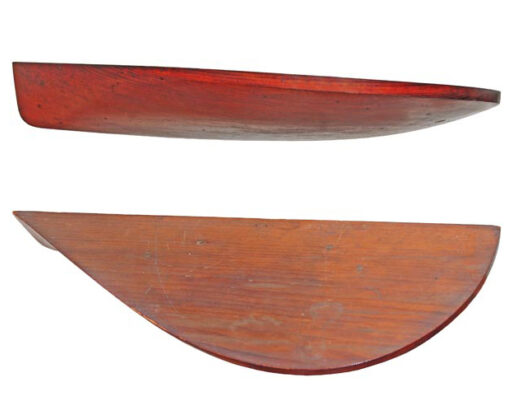
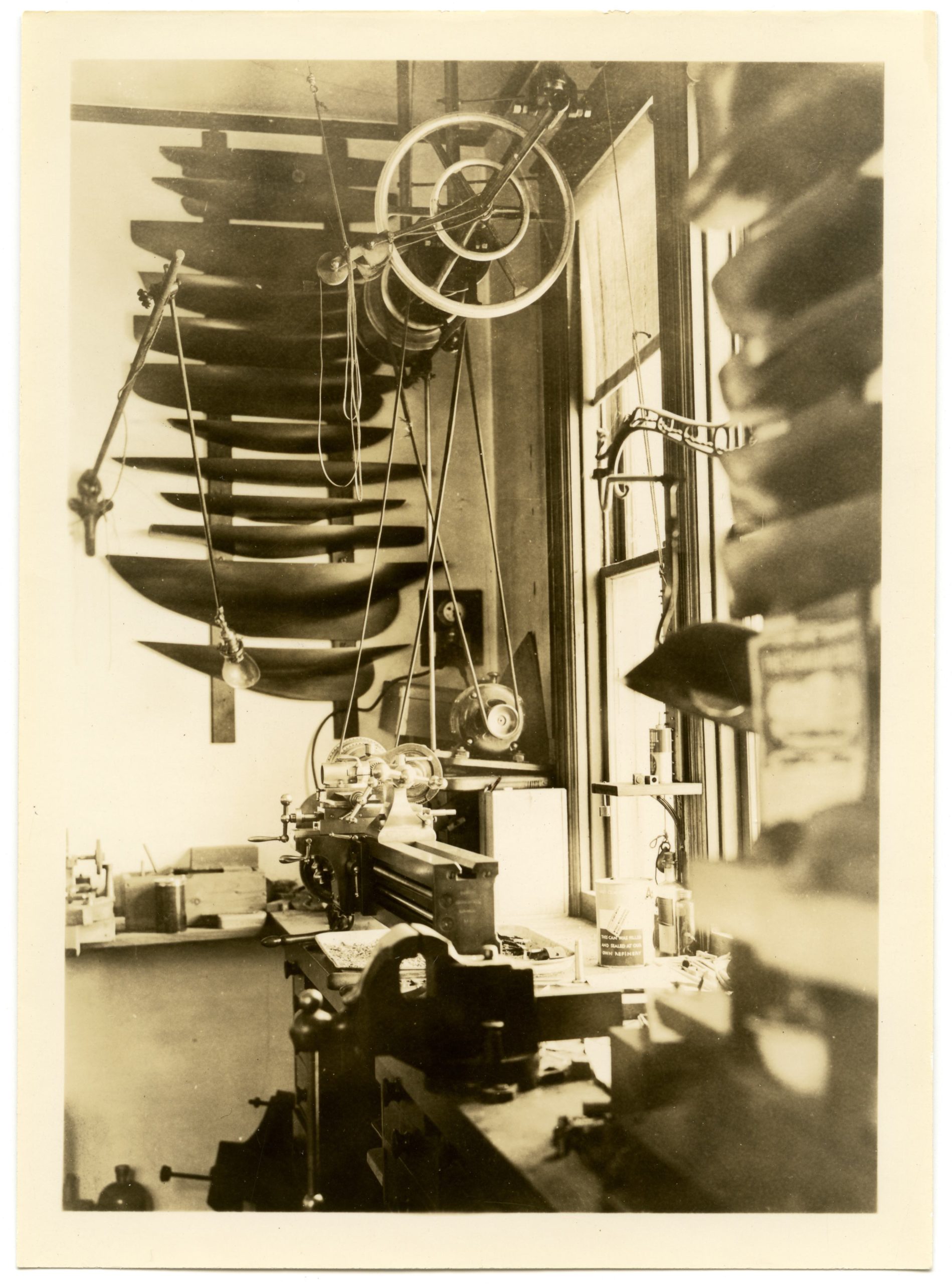
Captain Nat's workshop at Love Rocks 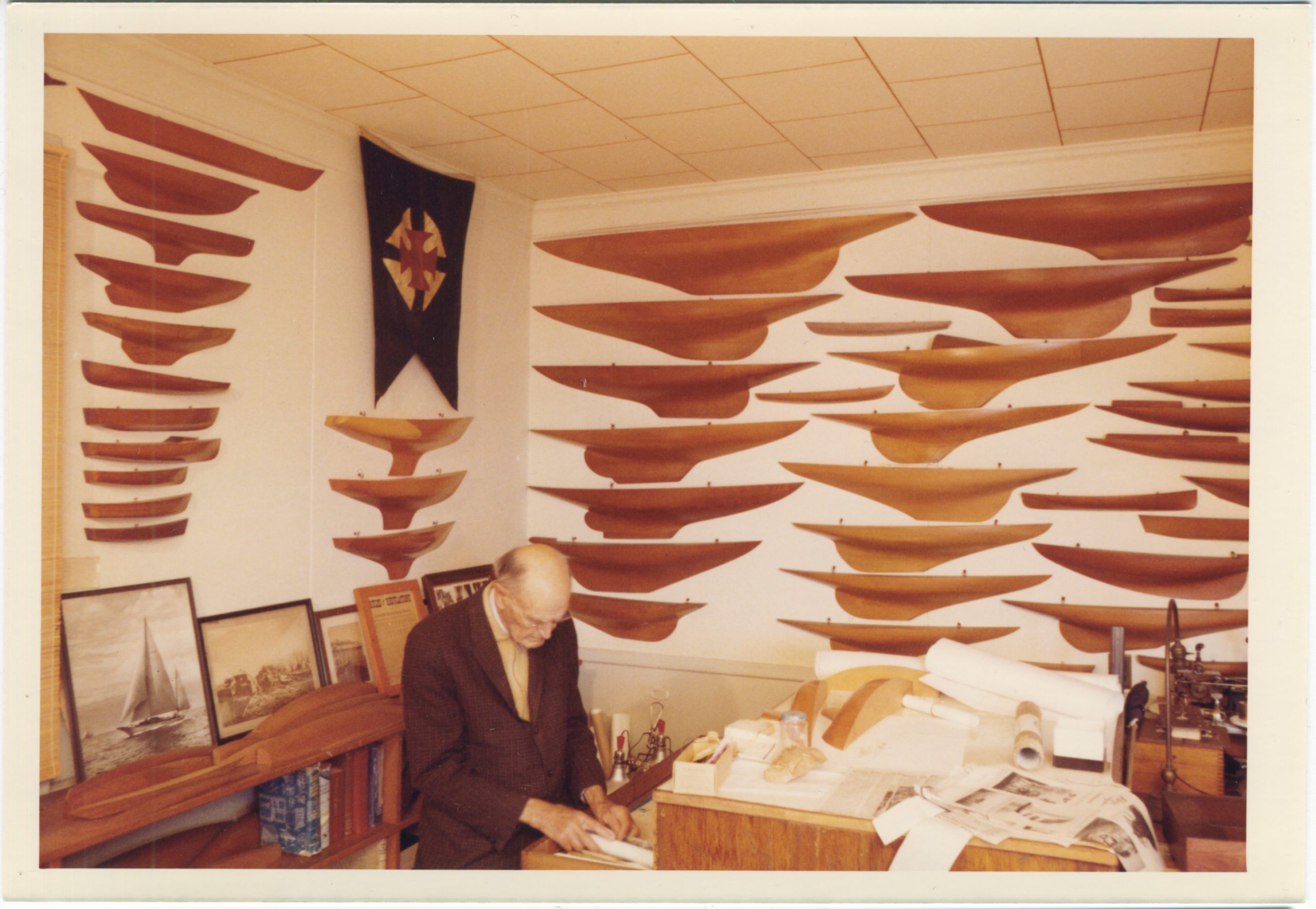
A. Sidney in the Model Room & Workshop at his home
Introduction
The Model Room & Workshop Exhibit is an extraordinary part of the Herreshoff Marine Museum experience. These two rooms contain hundreds of models and thousands of artifacts from Captain Nat's own model room & workshop in his former home, Love Rocks. Through the extraordinary foresight of three generations Herreshoff family members, it has remained preserved and intact as Captain Nat left it more than 80 years ago, and is now a permanent loan to the museum. If you come to the museum in person, you can see this remarkable exhibit adjacent to the Aria Gallery on the second floor. And wherever you are in the world, you can now explore a digital version of the Model Room & Workshop, too.
The models were reorganized by A. Sidney Herreshoff when he moved them to his home in the winter of 1953 into the late summer of 1954, prior to the sale of Love Rocks. Then in the late 1990s, the exhibit was moved from A. Sidney's home to its current location in the museum by his son, Halsey. While Captain Nat originally put the models up where he had space as he finished them at Love Rocks, both A. Sidney and Halsey in their respective installations reorganized the models in a manner that allowed for a more intentional narrative in the two rooms. They did this by grouping families of designs together in a logical progression. This organization was possible because of Sidney and Halsey's knowledge of the collection, proximity to Captain Nat, and their deep understanding of the evolution of his design career. Luckily, a large percentage of the models are identified by Captain Nat's hand-written annotations in pencil on the back, which also helps a great deal in crafting a narrative around them. Often this annotation includes several contract numbers and years in cases where a number of boats were built to a single model, and almost always includes at least the first HMCo. hull number built to that design. Today the models are also identified by a modern catalog number that was assigned by the curatorial staff in the process of installing and developing a guide to the collection in the 1990s and early 2000s.
As they are installed today, the majority of the models in the Model Room are designs that were actually built. They are arranged in like-groupings, with family boats surrounding Captain Nat's portrait on the east wall, and a roughly chronological progression of ideas for different design types along the south wall. The west and northwest walls are torpedo boats and power boats, and the northeast wall is the most famous (non-N.Y.Y.C.) one designs, and the America's Cup defenders and candidates. Altogether, the Model Room contains the seeds of each design for the vast majority of the more than 2,000 boats built by HMCo. between the early 1870s and 1945.
The Workshop, however, contains a mix of models built and unbuilt: many were carved by Captain Nat, and were thought experiments or preliminary designs. There are also other models in the Workshop that were carved by Herreshoff family members both before and after Captain Nat - the oldest model in the Workshop is believed to have been made by Captain Nat's father Charles in 1834, and there are many models by Halsey and A. Sidney, and a few by other family members such as J.B.H.

There are a small number of models in the Workshop carved by Captain Nat whose identities have been lost to time: they have no annotation on the back, there is no accompanying oral history, and they have not yet been matched up with any extant drawing or other archival document that might give some clue as to their identities. Now that publicly and privately held collections are being increasingly digitized and cataloged however, we have new tools at our disposal to sort through the archival material in trying to learn more about these unidentified models. We present you with precisely such a case today: that of mystery Model No. 1209, tucked away in the corner, fifth from the bottom, on the west wall of the Workshop.
Model No. 1209
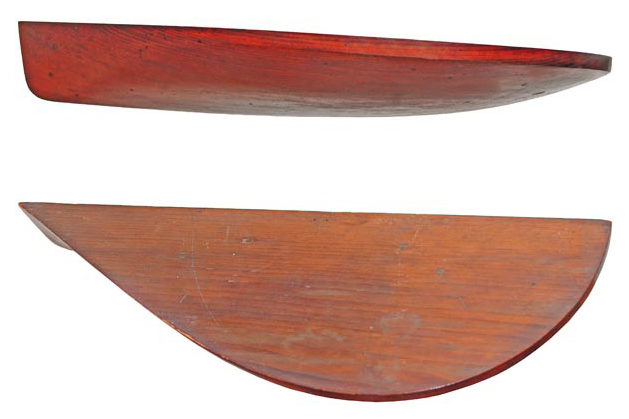
If you were to visit the Workshop today, and you were instructed to point to the strangest looking model in the whole room... there is an excellent chance you would pick out Model No. 1209. It is a shoal draft model that looks like an enormously fat tear drop. Indeed, from above you can see a perfect half circle clearly scribed on the deck. It has always been a puzzle, and a favorite for visitors to guess at: was it an exaggerated scooter? A catamaran cockpit? A bizarre sneakbox experiment? No one could say for sure, but it is displayed on Captain Nat's wall of experimental designs with a number of models that seem too strange to ever have been built. And we still don't know exactly what it is! But we do know more than we did a few weeks ago, and it all started with a drawing...
The Sail Plan
In addition to the models themselves and artifacts such as books and woodworking and measuring tools, the Herreshoff Collection in the Model Room contains some archival documents. Recently, a sail plan in that collection of papers caught our attention. The moment we saw it, it was clear that this was a sail plan for Model No. 1209 - the model profile overlays perfectly on the drawing. This was a very exciting discovery for two reasons: now there was an unusual rig attached to an unusual hull, hopefully giving us a few more clues to go on, and possibly even some help in figuring out a year (or at least an era) in which N.G.H. might have made this model. It was also exciting because of two small numbers penciled on the drawing - the only two numbers on the whole drawing - indicating the sail area of both jib and main, which meant it would be possible (with a bit of math help from our friends over at the HCR) to figure out the scale of the hull itself. Now we had a few more significant clues to go on both within the Herreshoff Collection and for an outside search in the quest to figure out when, how (and why!?) this model sprang from Captain Nat's mind.
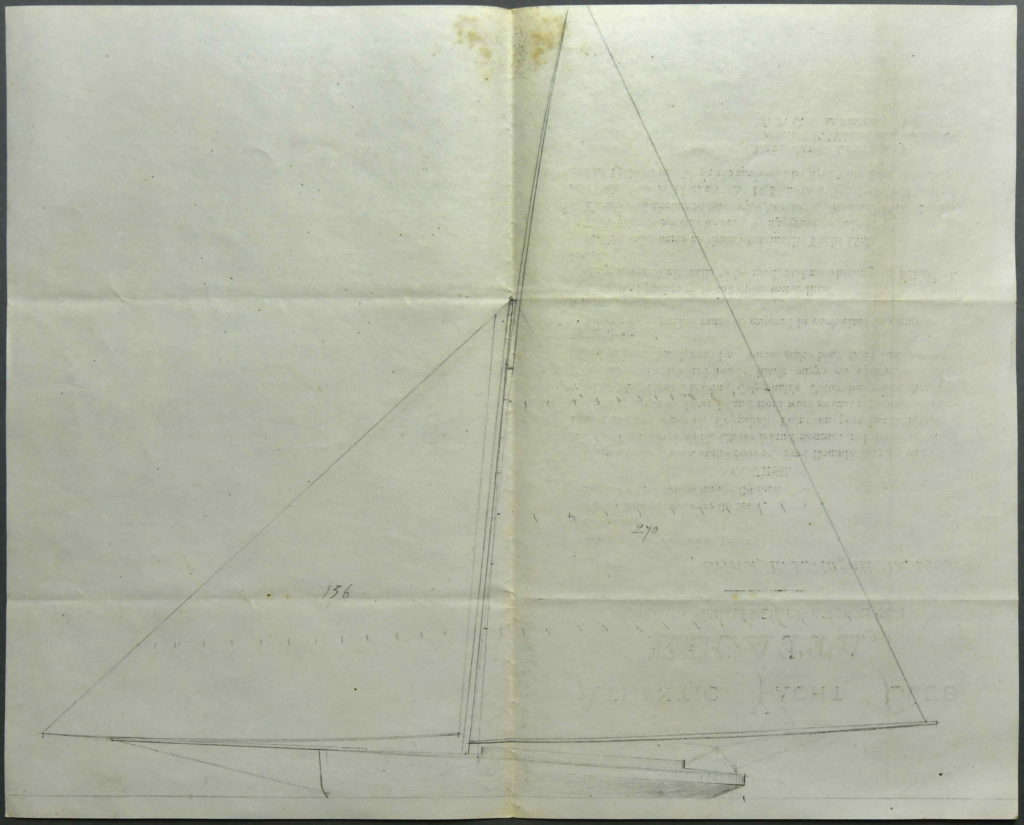
Now, a boat nut from New England might take one look at this plan and think, "sandbagger!" And at first glance, the proportions certainly are evocative of those wildly over-canvassed shoal draft oyster-boats-turned-racing-machines that were common from the Chesapeake to Connecticut during the mid 19th century. The rules that governed sandbagger races restricted only the hulls, so as time went on the rigs got larger and larger while the hulls remained about the same size until the sparred length was about twice the length of the waterline. The extraordinary spread of canvas on these centerboard boats required a lot of extra mobile ballast to keep them upright, so the crews took to carrying bags of sand onboard to haul with them to the windward side during races - hence the name "sandbaggers." But though the spar-to-hull proportions of this drawing say "sandbagger," the sandbaggers were always gaff rigged, and this drawing very clearly depicts something else. This shows a gunter rig - basically a gaff peaked so high as to be in line with the mast, creating a triangular sail profile. The gunter rig has been around for a long time, and possibly evolved from the far more ancient lateen rig. But the shape also foreshadows the sail-track-enabled marconi rigs that wouldn't really take over the yachting scene until the early 20th century. So now the question becomes: when did Captain Nat first start experimenting with gunter rigs? And is there still something of a sandbagger in this design despite the different rig?
Captain Nat's Gunter Rigs
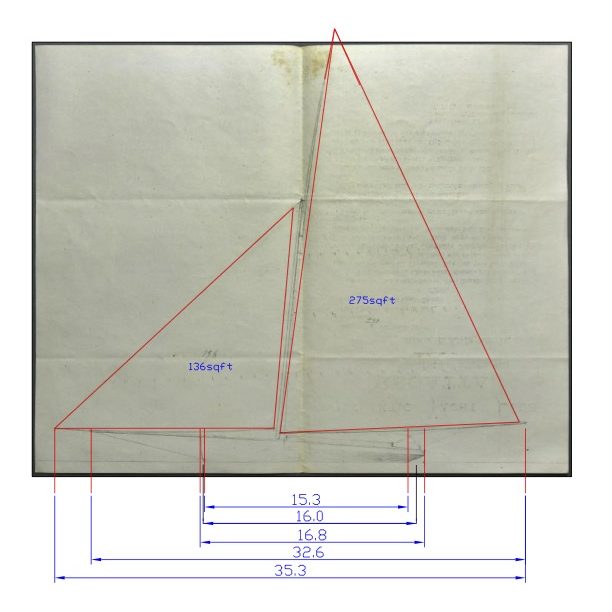
A search in the Haffenreffer-Herreshoff plans collection at the MIT Museum shows that boats actually built by HMCo. with gunter rigs didn't come all that early in Captain Nat's design career: there are two little electric launches, MAISIE (HMCo. #217) and an unnumbered launch for QUICKSTEP (HMCo. #213) that were both built in the winter of 1901-1902. Neither of them remotely resembles the drawing for Model No. 1209. However, a search for references to gunter rigs in the Herreshoff Collection housed in the Model Room brought back a surprising result: there is one mention of a gunter rigged boat in a list Captain Nat made sometime after 1881 of "Comparative Notes and Sections" of 18 boats, some designed by Herreshoff and some not. The twelfth boat on the list has no name, and is only described as "Design in 1875. Sliding gunter sail.; L 16f; B 114; P 82 Small sail." Using the sail areas from the drawing and the numbers from this list, it was possible to confirm that the 1875 design mentioned in the list was a fair proportional match to Model No. 1209. Now we had a compelling case for the model and drawing both dating to around 1875, and a good sense of the scale for the model.
The Sandbagger Connection?
Off on a different tack, we continued to chase down the hunch that this resembled an American sandbagger. Casting around online, we stumbled across this wonderful blog post by Chris Thomson of SailCraftblog about the history of American sandbaggers. And scrolling down, we all of a sudden saw something that looked awfully familiar:
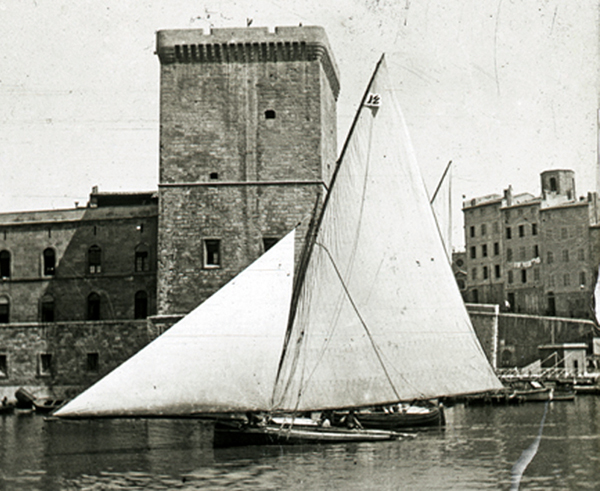
Now, some of you are probably ten steps ahead of us here, and alarm bells were already going off the moment we guessed the model and drawing were probably made around 1875. The following is a drastic oversimplification of a history that could fill volumes in its own right (again, check out the SailCraftblog for a great overview) but basically an American sandbagger and an American catboat were imported to France in the 1850s and 1860s, and created quite a stir on the French yachting scene. For the next four decades, elements of these iconic American designs were incorporated into the French vernacular, and highly localized racing types evolved into entirely their own classes along the Riviera and on the inland racing scene nationwide. One such class was known as the Houari Marseillais (or, the Marseilles gunter!), pictured at right. The rig is precisely like that on the drawing for Model No. 1209, though the houaris were apparently full keel boats, unlike the centerboard model in the Workshop. That said, the French sandbagger descendants that sailed inland were centerboard boats, and it is possible Model No. 1209 is some combination of French Riviera rig (unusual in New England at that period) and inland hull. This makes particular sense when we consider the hypothesis that model and drawing were made in 1875 - because where had Captain Nat spent several months of 1874? In France! Cruising along the French Riviera and exploring the inland waterways with his brother Lewis.
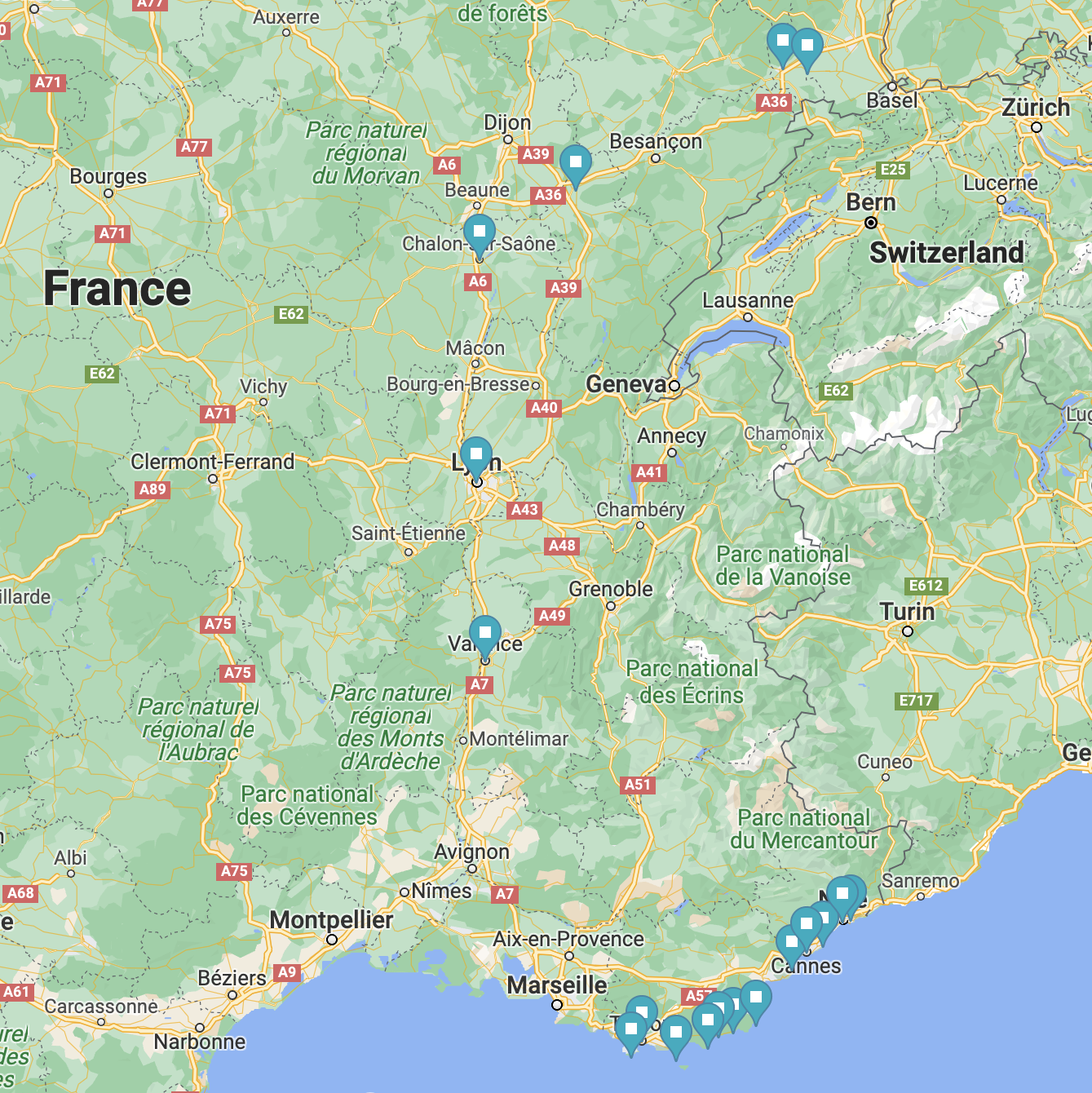
So, we were wrong! It wasn't an American workboat connection after all (or at least, it was a more distant connection than we'd suspected). Instead, what we now think we have on our hands is Captain Nat's version - inspired by his travels - of an extreme or exaggerated hybrid of several French racing designs from the 1870s, which in turn drew inspiration from earlier American working & racing craft. Quite a full circle! But it still doesn't explain the fact that the hull itself is a full circle. It's probably still fair to characterize this model as one of Captain Nat's experimental designs, and likely this design was never intended to be built - it is just proportionately so extreme compared to its contemporary catboats, sandbaggers and French clippers alike. Moreover, it has long been suspected that Model No. 1209 might have some connection to the model that A. Sidney arranged immediately above it (Model No. 1208), which is almost an extreme half circle in its depth rather than its beam.

There is still (always) more research to do, but we are excited to have gotten one small step closer to understanding the origins of one of the mystery models still left in the Model Room & Workshop.
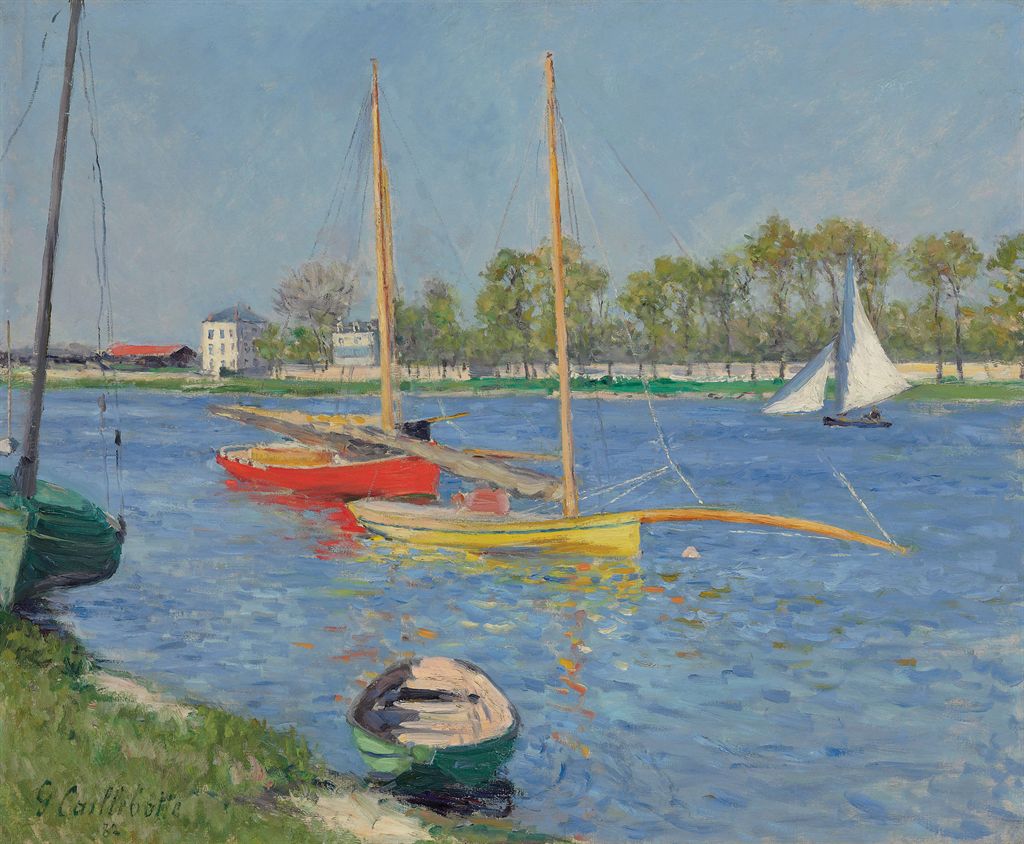
Painting by Gustav Caillebotte, via SailCraftblog 
From Dixon Kemp via SailCraftblog 
Painting by Claude Monet, Courtesy of the Museé D'Orsay 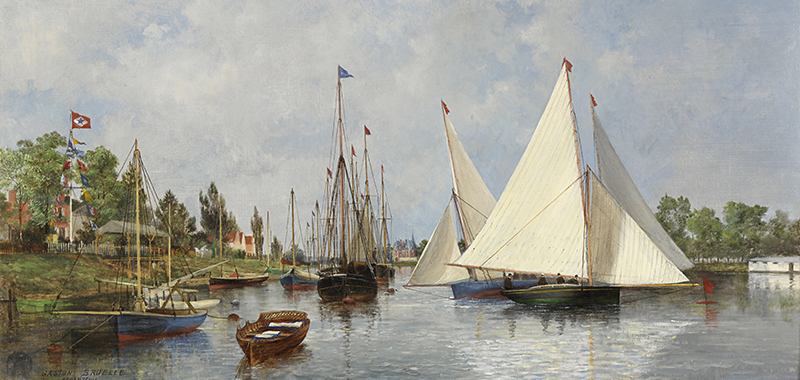
Painting by Gustav Bruell, via SailCraftblog 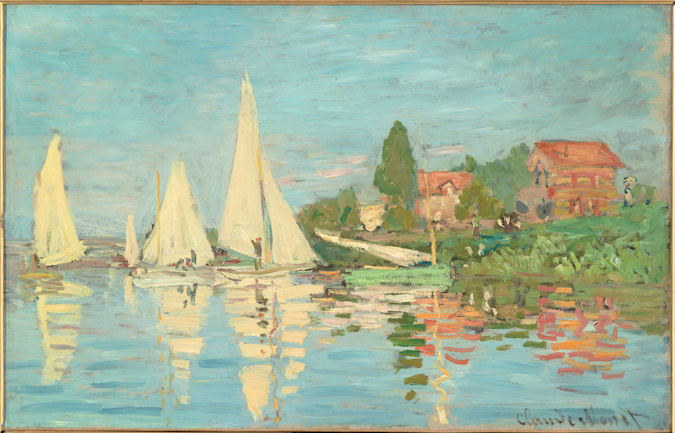
Painting by Claude Monet, courtesy of the Museé D'Orsay
